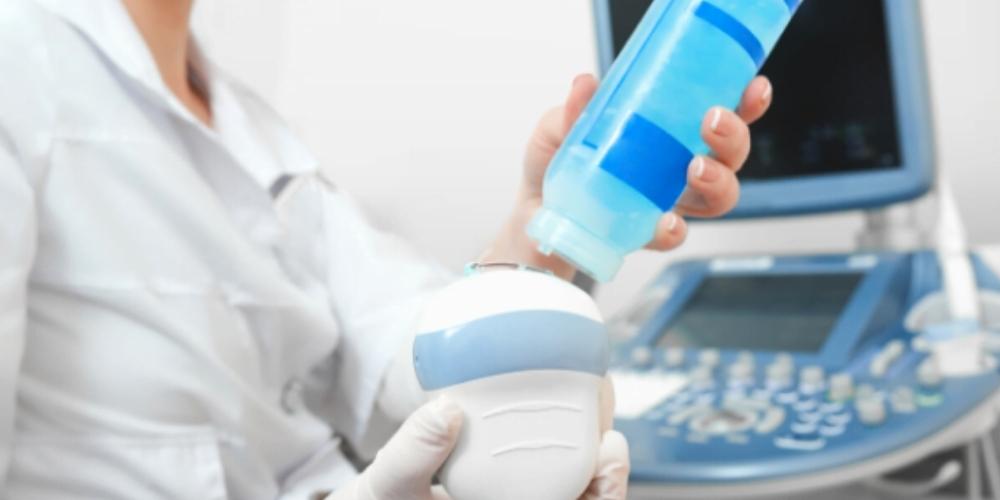In a recent study published in May in Ultrasound in Medicine and Biology, researchers found that point-of-care ultrasound (POCUS) may facilitate quick and accurate decision making in cases where the patient is experiencing chest pain or shortness of breath.
Point-of-care ultrasound scans are performed at the patient's bedside, thereby eliminating the need to move the patient to the imaging suite. Medical staff performing these exams should adhere to infection control protocols from their facility and the CDC. For example, the probe should always be properly cleaned and disinfected with hospital-grade products that are safe for ultrasound use, especially when dealing with patients who could be infected with a respiratory virus (such as COVID-19). In general, POCUS exams only require non-sterile gel.
The Israel-based research team conducted a small, randomized clinical trial at one hospital. The results indicated that performing ultrasound exams at the patient’s bedside shortened the treatment period for patients. Additionally, the study found that doing so also led to a different diagnosis of the patient in 28% of the cases.
The authors of the study, led by Dr. Yael Ben-Baruch Golan, an internist at Soroka University Medical Center in Beer-Sheva, Israel, wrote, "We have found that POCUS assessment, integrated early into the routine care of these patients, led to significantly shorter times to appropriate treatment. The median time to appropriate treatment was shortened by 19
To conduct the single-center trial, the researchers enrolled 60 patients who had been admitted to the internal medicine ward with respiratory or cardiovascular abnormalities. Initial examinations of the patients were performed by emergency physicians and internal medicine physicians and included physical examinations, labs, and medical history.
Following the initial examination, half of the patients were randomly assigned to the POCUS group. This group underwent bedside ultrasound imaging of their heart, lungs, and inferior vena cava. These images were taken within one hour of patient randomization and within 24 hours of admission into the hospital.
The researchers assigned physicians who were not part of the patients’ care teams to conduct the POCUS screening. The results of the screening were then sent to the patients’ primary physicians.
The authors then reviewed the diagnosis, treatment, and outcome data for all 60 participants in the study one year later. The results revealed that POCUS use added clinically relevant findings for 79% of patients who underwent beside ultrasound scans. Moreover, 14% of POCUS patients received an additional diagnosis and 28% had their previous diagnosis altered after receiving bedside ultrasound.
In addition to these results, the use of point-of-care ultrasound led to other changes. The study found that about one-third of cases which underwent POCUS led to a change in management strategies. Nearly 35% of these patients underwent additional medical imaging or had their discharge time changed. 31% of POCUS patients received altered medication.
The research team found improvements in treatment times as well, but no significant difference in the percentage of patients with a correct diagnosis. Patients in the POCUS group were able to receive treatment in a much shorter amount of time: five hours versus 24 hours. Furthermore, even though the difference was not statistically significant, the study found that the POCUS group received the correct diagnosis one day sooner than those in the control group.
"Trends toward reduction of time to correct diagnosis and higher rate of appropriate therapy were apparent in patients in the POCUS group versus control group, yet these findings did not reach statistical significance, probably because of the small sample size in our study," the research team wrote.
The research team noted that, although the results looked promising, the clinical trial only took place with a small number of patients at a single facility. In the future, the team hopes to build upon the pilot study with more randomized clinical trials to validate whether point-of-care ultrasound can lead to accurate and timely diagnosis and treatment of patients.
The authors concluded, "This is the first randomized controlled trial indicating that incorporation of the POCUS exam into the early diagnostic routine workup of patients admitted to the medical ward with chest pain or dyspnea reduces time to appropriate therapy. These results should be further investigated in larger prospective studies to strengthen the evidence that POCUS assessment affects clinical outcomes."
When performing bedside ultrasound examinations, it is important for physicians and imaging practitioners to take a variety of precautions, especially if the patient is exhibiting symptoms of a virus (such as COVID-19). In certain cases, physicians should wear medical gloves and PPE depending on the condition of the patient.
For more information on infection prevention and control for medical imaging, visit our best practices page.







